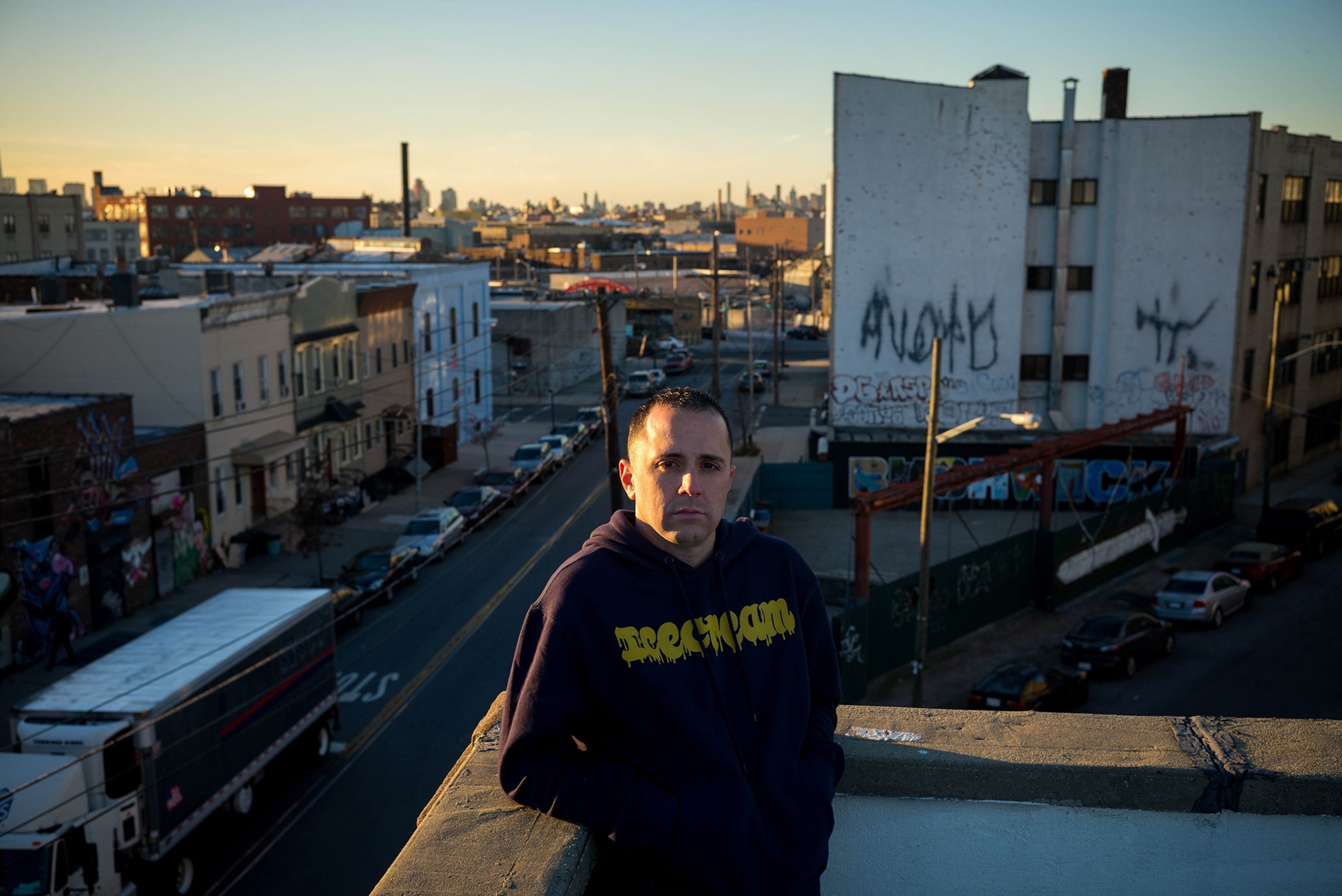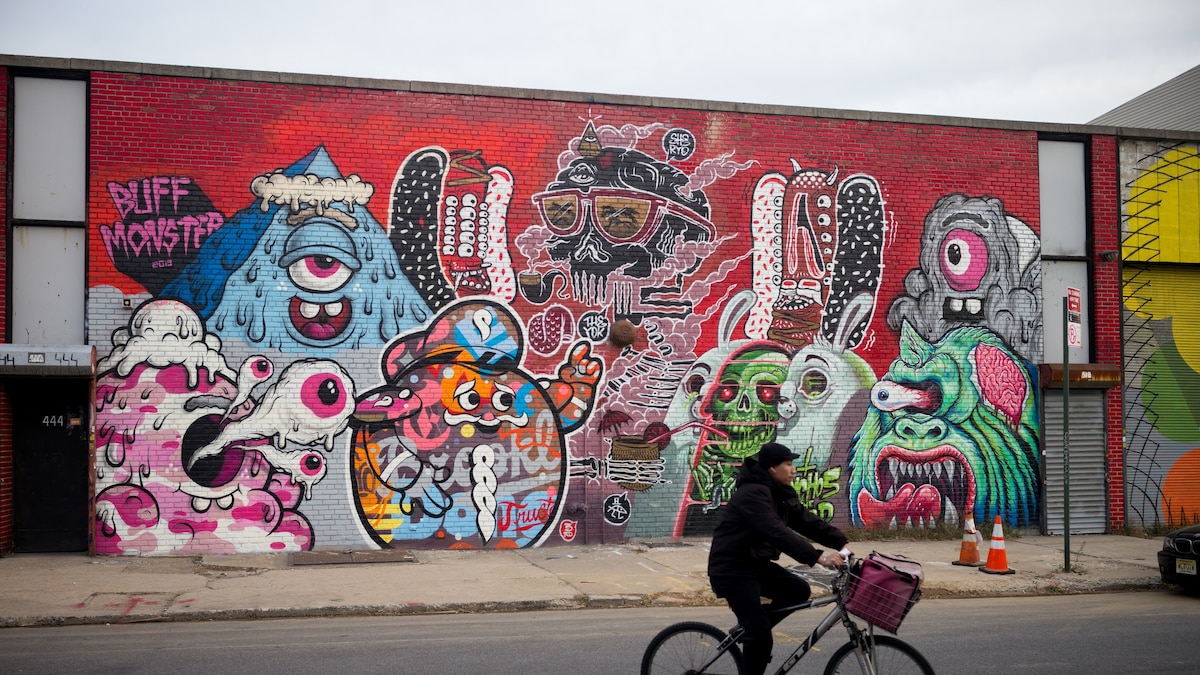In the past three decades, Brooklyn – specifically Bushwick and the surrounding areas – has transformed into a popular tourist area beyond the bustling crowds found in Manhattan.
But as the southern borough has continued to reinvent itself, there are reminders that the people and rich cultural legacy remain in Bushwick—with street art playing an integral part in preserving the local culture, encouraging creative expression, and building community even as gentrification continues.
The evolution Bushwick over the past 50 years
Fifty years ago, this part of Brooklyn contained a diverse mix of immigrant families. “In the 50s through the 70s, Bushwick was home to Italian, German, and Polish communities,” says Celestina León, district manager with Brooklyn Community Board 4. She added that Black Americans from the south and families from the Caribbean also came to the neighborhood in search of industrial labor opportunities.
I was born in Bushwick in the 1970s – when the neighborhood was much different and it didn’t escape the effects of New York City’s financial decline in the 70s. The Bushwick of my childhood was known for gangs, crime, poverty, and vacant buildings – many of them burnt and crumbling (photographer Meryl Meisler is known for capturing these scenes in her Bushwick collections).
But in the early 2000s, León says, artists and young professionals began arriving in Bushwick, drawn by lower rents and more spacious housing. Gradual waves of gentrification followed, triggered in part by the redevelopment of the Williamsburg waterfront, which pushed people there to seek more affordable alternatives.
A thriving art scene thrives despite gentrification
Today, Bushwick has a much different look and feel. One change is impossible to miss: the eye-catching street art that adorns buildings throughout the neighborhood. Bushwick has developed a reputation as a global hub for street art, attracting artists (and fans) from around the world. Out-of-town visitors participate in daily street art tours, where they take selfies in front of impressive murals that in some cases span half a block.
David “Chino” Villorente, a Brooklyn-born artist with strong Bushwick family ties, says underdeveloped, industrial areas (like the Bushwick of the past) offer expansive exterior spaces that can serve as the perfect blank canvas for street artists. He notes that when an area becomes a hotspot for street art, that’s often a sign of impending gentrification. “Usually most of the murals are going up while the green construction boards are up, and there are cranes in the background,” says Villorente. “So that seems to be a very calculated way of moving young people in. The construction is happening, and it does a phenomenal job of drawing in young people with all of these amazing murals for the backdrops in their social media posts and TikTok videos. More often than not, when I see street art exploding somewhere, they’re in communities that are about to experience gentrification.”
In Bushwick, gentrification brought coffee shops and young professionals – and higher rents. Jason Maas is a Licensed Mental Health Counselor who was a street artist in Bushwick in the mid-2000’s. He says he and other creatives were inspired by the work of street artists like Banksy and Shepard Fairey – the artist behind the Obama Hope poster campaign – fostered “the belief that street art could change the world.”
Maas says the commercial success of Banksy and other high-profile artists led street art to become mainstream––welcomed by businesses and property owners. “What was daring and counterculture for a time slowly became an aesthetic sought after and commissioned, a visual attraction which elevated the cool factor of neighborhoods and contributed to their increase in popularity, and ultimately, the rental price of Bushwick.” Those soaring rents pushed out many longtime residents – including some of the artists whose work made the neighborhood so popular.
While graffiti and street art have many similarities and often overlap, graffiti is more of a language the artists use to leave their mark or exchange messages, whereas street art tends to be more of a visual, creative expression meant for a wider audience. Villorente says the presence of street art may deter some random “tagging,” but doesn’t eliminate it – and in some cases, graffiti artists who don’t appreciate murals will deliberately tag them.

Brooklyn native and founder of Bushwick Collective, Joe Ficalora works with artists from all over the world to create the creatively colorful street murals found on the walls of buildings located throughout the neighborhood. Photograph By Benjamin Petit /Benjamin Petit/Haytham-REA/Redux
Bushwick Collective nurtures the street art scene
Much of the credit for the street art scene goes to the Bushwick Collective, a nonprofit organization and outdoor gallery that coordinates many of the artistic projects in the neighborhood. Founder of The Bushwick Collective, Joseph Ficalora was born in and still lives in Bushwick, helping to run the steel manufacturing business his family started there in the 1960s.
Although new street art pops up throughout the neighborhood constantly, the biggest flurry of activity happens when the Bushwick Collective hosts their annual Block Party. Every year, the event draws thousands of people – including artists and enthusiasts from all over the world. This year, 57 new mural installations were created during the three-day Block Party in June.
“It has brought the community together,” Ficalora says of the Collective and the street art scene, noting that people from around the globe now flock to the neighborhood few wanted to visit a few decades ago. “Everyone has been grateful and created a culture, sense of family and inspiration,” says Ficalora. “People want to live in Bushwick because it’s such an inspiring place to live.”
The Collective and other local groups host events periodically, but visitors can check out the impressive street art displays in Bushwick anytime. You can stroll through the neighborhood and see the murals for free – or reserve a spot on one of the street art tours, where knowledgeable guides share stories about the artists and the evolution of the local street art scene.
Lisa Levy is an artist and performer who has lived in Bushwick since 2011 and hosted the Bushwick Open Studios benefit from 2013 to 2016. “A lot of artists in the neighborhood knew each other and we all ran into each other at the local bars and galleries. Since that time rents have gone up and a lot of the studios and galleries cleared out. The street art scene has remained vibrant though.”
The neighborhood’s outdoor art displays provided welcome comfort when COVID caused the city – and country – to shut down, Levy says. “During the pandemic when I couldn’t go to museums and galleries, I would walk outside, and I felt so grateful to be surrounded by art right outside my door.”

